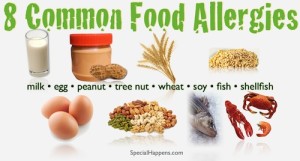We talked in class about Bisphenol A, or what we call BPA and the question came up, what is it? The answer seems pretty vauge, because in my research, I still don’t have a clear enough picture of what it is and how it is harmful. So I ask, does it matter and why should I care?
 BPA is a used mainly for making hard plastics: our water bottles, tupperware, baby bottles things like that, but it’s also used for making less expected materials, CD’s, dental fillings and receipt papers from the store. According to Wikipedia, Bpa is used in most food and beverage cans, to keep the food away from the aluminum. This means that we are exposed constantly to the effects of this .
BPA is a used mainly for making hard plastics: our water bottles, tupperware, baby bottles things like that, but it’s also used for making less expected materials, CD’s, dental fillings and receipt papers from the store. According to Wikipedia, Bpa is used in most food and beverage cans, to keep the food away from the aluminum. This means that we are exposed constantly to the effects of this .
So why is it harmful? Bpa was originally created to be an artificial estrogen, but was significantly less effective then the current one that was being used. then being used in the way we are familiar with it, in 1997 it tested and adverse connections were found in lab rats. In 2009 Consumer Reports posted an analysis of BPA, reporting that the content humans were exposed to exceeded the FDA recommendations. Depending on the stage at which harmful levels are consumed, BPA could effect, at a perinatal level, sweet and salty taste preferences. At an adult level, BPA could modify insulin and sensitivity. Some studies have show a connection between BPA and the malfunction of the thyroid. In animals, BPA has been linked to testicular tumors and leukemia but the evidence was not strong enough to provide statistical significance. Animal models exposed at the perinatal stage have shown signs of altered breast development and risks of breast cancer development at later ages.
Bpa was originally created to be an artificial estrogen, but was significantly less effective then the current one that was being used. then being used in the way we are familiar with it, in 1997 it tested and adverse connections were found in lab rats. In 2009 Consumer Reports posted an analysis of BPA, reporting that the content humans were exposed to exceeded the FDA recommendations. Depending on the stage at which harmful levels are consumed, BPA could effect, at a perinatal level, sweet and salty taste preferences. At an adult level, BPA could modify insulin and sensitivity. Some studies have show a connection between BPA and the malfunction of the thyroid. In animals, BPA has been linked to testicular tumors and leukemia but the evidence was not strong enough to provide statistical significance. Animal models exposed at the perinatal stage have shown signs of altered breast development and risks of breast cancer development at later ages.
In all of the studies I read, none of them were able to give me evidence that BPA actually did something (in the sugary drink study, the consequences were clear that too much soda was bad). One study suggested BPA had links to obesity, but if BPA is in cans and plastics and I over eat things that come out of cans and plastics, is reverse causation more likely a culprit? I’d say yes!
I had to ask myself, if I was buying a water bottle and there were 2 bottles side by side, same price, would I get the BPA free version?  Sure I would. It’s not costing me anything, and the science has yet to show me evidence that it is harmful. If the bottles had different prices, I would go with the cheap one.
Sure I would. It’s not costing me anything, and the science has yet to show me evidence that it is harmful. If the bottles had different prices, I would go with the cheap one.



 Bpa was originally created to be an artificial estrogen, but was significantly less effective then the current one that was being used. then being used in the way we are familiar with it, in 1997 it tested and adverse connections were found in lab rats. In 2009
Bpa was originally created to be an artificial estrogen, but was significantly less effective then the current one that was being used. then being used in the way we are familiar with it, in 1997 it tested and adverse connections were found in lab rats. In 2009 
 (baby yawns in utero)
(baby yawns in utero)
